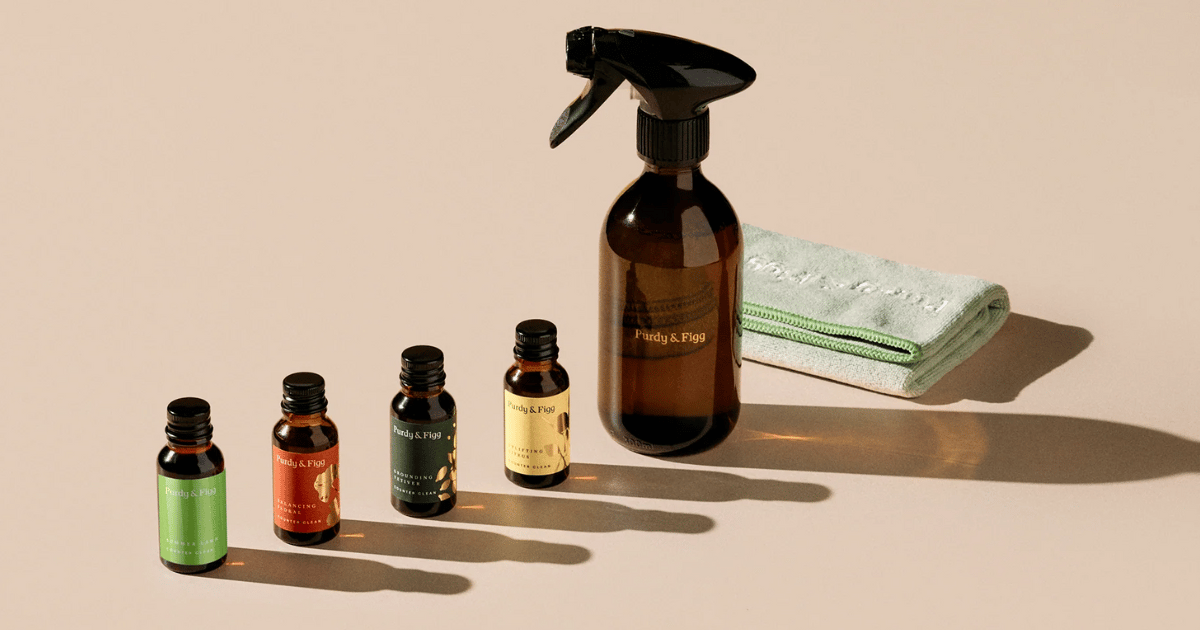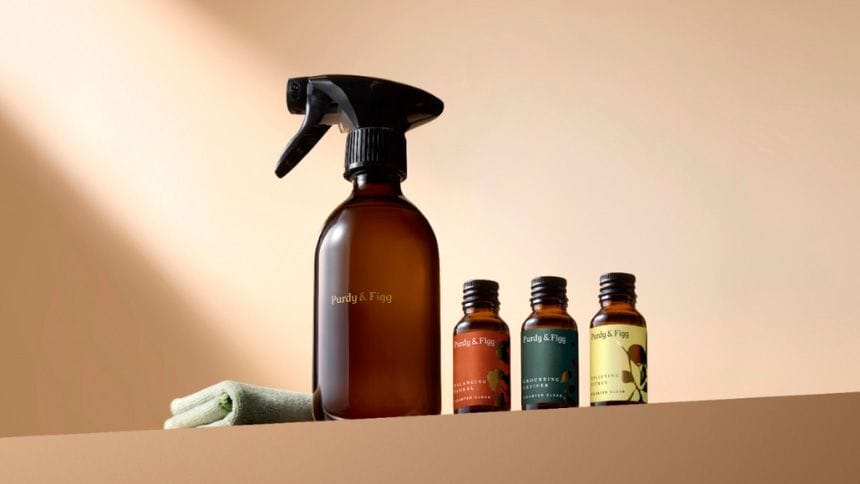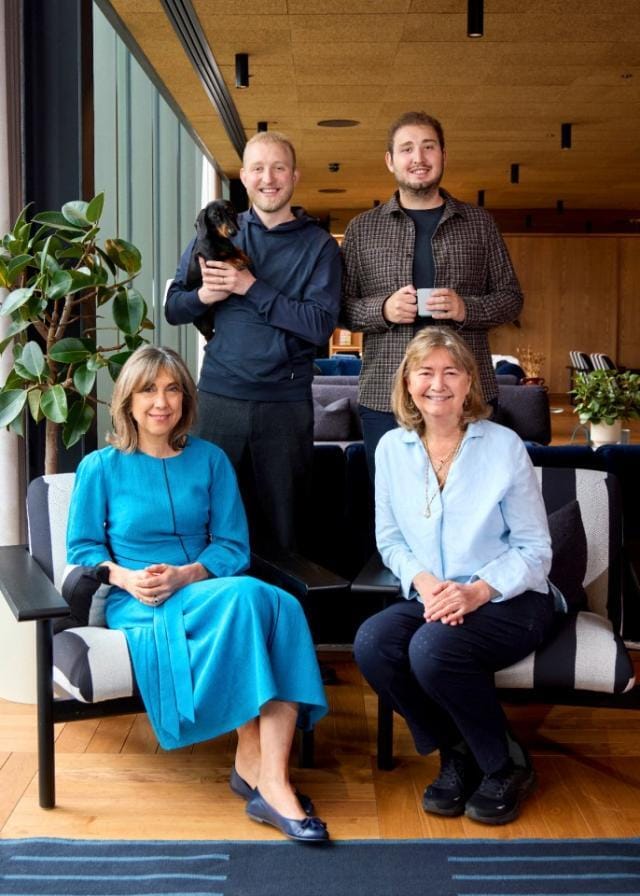- Conscious Commerce
- Posts
- 🟣 Issue No. 62: Purdy & Figg
🟣 Issue No. 62: Purdy & Figg
Inside their scent-led DTC model and subscription-first scale engine. Discover how they 10x’d revenue with subscriptions, not VC cash.


wellness commerce insights
$100M BRAND STORY
Purdy & Figg: £40M Brand Built on Fragrance & Margin

Purdy & Figg turns home cleaning into a wellness ritual. Launched by NHS nurse Purdy Rubin and horticulturist Charlotte Figg, the brand exploded by pairing high-performing, non-toxic cleaning products with luxury essential-oil scents. Their breakout product, Counter Clean, didn’t just enter the green cleaning space—it reframed it entirely.
Today, Purdy & Figg is a £40M direct-to-consumer brand built without venture funding, riding on the back of product obsession, vertical integration, and a ruthlessly optimized subscription engine.
A key inflection point? They 10x’d monthly revenue after reengineering their offer for subscription-first retention—before pouring fuel on acquisition.
Are They Funded or Bootstrapped?
Completely bootstrapped. After their garage-based beginnings, Purdy’s sons: Jack and Charlie Rubin, joined the founding team and helped operationalise the business. They didn’t just avoid raising capital—they built a factory, fulfilment centre, and content engine in-house to stay lean and profitable.
As Jack shared , “We just realised early on that contribution margin was everything. So we made the hard choice to build infrastructure that let us scale slowly but sustainably.”
Their Origin Story

Originally launched during COVID with a hand sanitiser, Purdy & Figg hit their stride with the introduction of Counter Clean—a multi-surface cleaner built around efficacy, indulgence, and natural health.
Jack Rubin explained that their early strategy was deliberate slowness. Instead of chasing scale from day one, they spent several months testing price points, scent SKUs, messaging, and subscription logic—all at low volumes—until they found the retention and LTV numbers that justified scaling.
Once they cracked that, growth accelerated fast. “We’re acquiring 8,000–9,000 new customers a month, and 4,000–5,000 are coming in on subscription,” he shared
Core Customer Base
Purdy & Figg resonates most with environmentally conscious homeowners who clean regularly, value wellness, and care deeply about aesthetics. These are customers who want their homes to feel both safe and sensory. What hooks them is the scent—what keeps them is the seamless subscription model and health-first ingredient list.
The insight? People don’t want to clean—they want to feel clean. And a spa-like aroma matters more than most brands realize.
How Did They Grow So Sustainably? (P&L View)
Their playbook is a masterclass in direct-to-consumer ops discipline:
First, they built their own factory and fulfilment centre, which allowed them to drastically reduce COGS, improve margin, and control pace. That vertical integration meant more cash to reinvest in customer acquisition and faster response times when ingredients or packaging delayed competitors.
Second, they leaned hard into subscription-first acquisition. Instead of offering 15% off and hoping for retention, they designed an onboarding flow where customers start on a refill subscription—then optimised the cadence, welcome UX, and login flow to reduce churn. This helped them drive up LTV and lower their allowable CAC.
Third, they scaled only after locking down product-market fit. Their team ran controlled experiments for months before scaling spend—resulting in a more efficient, stickier customer base.
Jack Rubin summed it up: “Going slow actually let us grow faster. We built real margin, real retention, and that gave us real leverage.”
Key Milestones
2020: Launched with hand sanitizer during COVID
2021: Debuted Counter Clean, their hero product
2022: Built in-house manufacturing and fulfillment
2023: Optimized their subscription funnel and hit 10x monthly revenue
2024: On pace for £40M in revenue with 5,000+ new subscribers monthly
Influencer Marketing Mix
They run one of the leanest, most effective influencer strategies in the category. Every month, the team sends product to 500+ micro and mid-tier creators on TikTok and Instagram. About half post organically, and 80% of those give usage rights—fueling a content pipeline of 200+ authentic UGC assets monthly.
In parallel, they’ve built an in-house team of editors and strategists who repurpose and remix that content into over 1,000 ads per month. They call this their “ad engine,” and it’s central to their Facebook-first acquisition model.
TikTok? Growing fast—but not yet a direct sales engine. As Jack shared, “I don’t even know if it’s driving revenue yet, but I know it’s building owned attention—and that’s going to matter.”
Their Marketing X-Factor
They didn’t just create a better cleaning product—they repositioned the act of cleaning itself.
Rather than compete on green or efficacy alone, they leaned into fragrance. As Jack described, “We’re not the most expensive cleaner—we’re the cheapest candle.” That reframe flipped their pricing narrative, elevated perceived value, and opened up emotional whitespace.
Their marketing isn’t about chores—it’s about indulgence. Beautiful scent. Ritual. Calm. All delivered with clinical-level performance and refillable ease.
That positioning, combined with content volume, made them a DTC juggernaut.
Takeaways for Wellness Operators
Reframe the category. Don’t compete on the obvious—find a new emotional angle. They didn’t sell “cleaning”; they sold “luxury for your home.”
Build margin, then scale. They didn’t chase revenue—they built their own factory to own their P&L.
Subscription is a business model, not a toggle. They built the entire UX and offer stack around LTV—not one-time discounts.
Test fast, test often. Over 1,000 ads per month gave them data edge. Volume = velocity.
Vertical integration is underrated. For bootstrapped founders especially, owning your supply chain is freedom.

ADVERTISE WITH US
Interested in advertising?
Connect with our highly engaged community of Wellness Commerce operators and execs.
How did you like today's newsletter? |